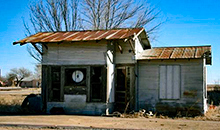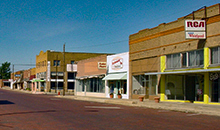Main Menu
Armstrong County Data
Armstrong County Communities & Places
Genealogy & History Links by USGHN
Important Armstrong County Addresses
Sponsors
Armstrong County Neighbors
Briscoe County, Texas
Carson County, Texas
Donley County, Texas
Gray County, Texas
Potter County, Texas
Randall County, Texas
Swisher County, Texas
Other Websites
Welcome to Armstrong County Texas Genealogy & History Network!
Welcome to the Armstrong County, Texas Genealogy & History Network. Our purpose is to provide visitors with free resources for genealogical and historical research. To share your genealogy or history information, send an email to txghn@outlook.com and we will happily include it here. For other Texas Counties, visit the Texas Genealogy & History Network state website and go to the appropriate county. Thanks for visiting and good luck with your research! |
|
About Armstrong County, Texas...

Armstrong County is in the central Panhandle on the eastern edge of the Texas High Plains. It is named for one of several pioneer Texas families named Armstrong, though it is unclear which one. Claude, the county seat, is in the north central part of the county thirty miles east of Amarillo.
The Panhandle was occupied by Paleo-Indians perhaps as early as 10,000 B.C. The Apaches were supplanted by the Comanches around A.D. 1700, when the area became a part of the Comanche homelands. Palo Duro Canyon was a favorite haunt of the Comanches. After the Comanche incursion, some Kiowa and Cheyenne Indians also moved into the area. Whites have lived here only since the 1870s. The Red River War of 1874 led to the final removal of the Comanches to Indian Territory. The campaign culminated in the battle of Palo Duro Canyon, fought on both sides of the present Randall-Armstrong county line. With the Indian threat removed, ranchers soon arrived.
 Ranching came to Armstrong County and the Panhandle with Charles Goodnight and John Adair. In 1876 Goodnight brought a herd of 1,600 cattle into the Palo Duro Canyon. A short time later, in 1877, he formed a partnership with John G. Adair from Ireland. Their ranch, the JA, grew to encompass over 1,335,000 acres by the early 1880s. This included most of Armstrong County and parts of five surrounding counties. Homesteaders, intending to raise stock and crops, began to trickle into the county in the late 1880s.
Ranching came to Armstrong County and the Panhandle with Charles Goodnight and John Adair. In 1876 Goodnight brought a herd of 1,600 cattle into the Palo Duro Canyon. A short time later, in 1877, he formed a partnership with John G. Adair from Ireland. Their ranch, the JA, grew to encompass over 1,335,000 acres by the early 1880s. This included most of Armstrong County and parts of five surrounding counties. Homesteaders, intending to raise stock and crops, began to trickle into the county in the late 1880s.
Although the county was marked off from Bexar County in 1876, it remained unorganized until 1890, when the growing population felt the need for a local government. Accordingly, the county was organized in March of that year, with Claude as the county seat.
In the early years of the twentieth century, the great ranches began to be broken up and land was sold to newly arriving farmers. Between 1900 and 1910, the number of farms in Armstrong County grew. Many newcomers planted cotton. The large ranches, though reduced in size, continued to dominate the local  economy.
economy.
During the Great Depression of the 1930s, the agriculturally based economy suffered and the county required many years to recover. A drop in population, first caused by the depression and subsequently spurred on by advances in agricultural mechanization and technology, continued into the 1970s.
Goodnight, laid out in 1887, flourished in the 1890s and early 1900s, even maintaining a college, Goodnight College, from 1898 to 1917. By 1980 only twenty-five people lived in the hamlet, and by 2000 its population had dropped to eighteen.
Likewise, Washburn prospered in the 1890s and early decades of the twentieth century. It was established in 1887 and included a railroad section house on the Fort Worth and Denver City line, a depot, stock pens, and a coal chute. This community, which had been so active in the 1890s, had only seventy  residents in 1980; in 2000, 120 people lived there. Wayside, a farming community in the southwest corner of the county, has grown but little since the 1920s, and had only forty people in 1980, and thirty in 2000. Like Washburn, Claude, the county seat, was also laid out in 1887. It grew into the leading town in the county, yet only numbered 1,112 people in 1980 and 1,199 in 1990. In 2000, 1,313 people lived there.
residents in 1980; in 2000, 120 people lived there. Wayside, a farming community in the southwest corner of the county, has grown but little since the 1920s, and had only forty people in 1980, and thirty in 2000. Like Washburn, Claude, the county seat, was also laid out in 1887. It grew into the leading town in the county, yet only numbered 1,112 people in 1980 and 1,199 in 1990. In 2000, 1,313 people lived there.
The economic structure of Armstrong County reflects its evolution and its ranching-dominated economy. Ranches, including the JA Ranch, occupied about 68 percent of the land in the county in 2005; most of the rest was devoted to crops, including wheat, sorghum, cotton, and hay. County leaders were also working to attract tourists into the area. No meaningful amounts of oil and gas are produced in Armstrong County. Recreation and tourist attractions include Palo Duro Canyon State Scenic Park, the pioneer Goodnight Ranch Home, the Old Settlers Reunion, and the Caprock Roundup, which is held each year in July.
 The county has a total area of 914 square miles, of which 909 square miles is land and 5 square miles (0.5%) is water. The population recorded in the 1880 Federal Census was 31. The population peaked in 1930 at 3,329. The 2010 census recorded 1,901 residents in the county.
The county has a total area of 914 square miles, of which 909 square miles is land and 5 square miles (0.5%) is water. The population recorded in the 1880 Federal Census was 31. The population peaked in 1930 at 3,329. The 2010 census recorded 1,901 residents in the county.
Neighboring counties are Carson County (north), Gray County (northeast), Donley County (east), Briscoe County (south), Swisher County (southwest), Randall County (west), and Potter County (northwest). The county seat is Claude. Other communities in the county include Goodnight, Washburn, and Wayside.
Armstrong County, Texas Records
Birth Records - The Texas Department of State Health Services has records from 1903 to present. Records for the last 75 years considered private and will only be provided to certain individuals. To obtain current information on who may obtain a record, how to submit a request and an official request form, see the Texas Department of State Health Services website or write to Texas Vital Records, Department of State Health Services, P.O. Box 12040, Austin, TX 78711-2040.
For older birth records you will have to write to the County Clerk of the applicable county. The existence of birth records prior to 1903 will vary widely from county to county. Local historical societies and genealogy collections in local libraries may be able to provide some information.
Death Records - The Texas Department of State Health Services has records from 1903 to present. Records for the last 25 years considered private and will only be provided to certain individuals. To obtain current information on who may obtain a record, how to submit a request and an official request form, see the Texas Department of State Health Services website or write to Texas Vital Records, Department of State Health Services, P.O. Box 12040, Austin, TX 78711-2040.
Marriage Records - The Texas Department of State Health Services can provide a verification letter of marriage for Texas marriages from 1966 to present. This is NOT a marriage license. To obtain a certified copy of a marriage license you must contact the County or District Clerk in the county or district where the marriage took place.
Local historical societies and genealogy collections in local libraries may be able to provide some information.
Divorce Records - The Texas Department of State Health Services can provide a verification letter of divorce for Texas divorces from 1968 to present. This is NOT a copy of the divorce decree. To obtain a certified copy of a copy of the divorce decree you must contact the County or District Clerk in the county or district where the divorce took place.
Local historical societies and genealogy collections in local libraries may be able to provide some information.




